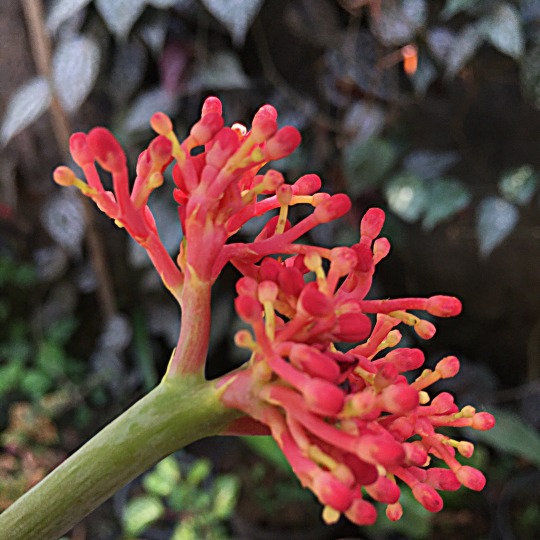#Jatropha multifida
Video
n132_w1150 by Biodiversity Heritage Library
Via Flickr:
Familiar Indian flowers :. Bombay :Published for the author by L. Reeve and Co. ;[1878]. biodiversitylibrary.org/page/33463723
#Botany#Flowers#India#University Library#University of Illinois Urbana Champaign#bhl:page=33463723#dc:identifier=http://biodiversitylibrary.org/page/33463723#Jatropha multifida#Lena Lowis#Mrs Ninian Lowis#Selina Caroline Shakespear Lowis#Selina Caroline Shakespear#Q27678035#illustrator:wikidata=Q27678035#WomeninScience#HerNaturalHistory#flickr#coralbush#coral plant#physic nut#botanical illutration#scientific illustration
8 notes
·
View notes
Text
"Vibrant Delights: Exploring Tropical Plants with Orange Flowers!"
"Vibrant Delights: Exploring Tropical Plants with Orange Flowers!"
Hello, plant lovers! 🌿 Are you ready to embark on a journey into the exotic and vivid world of tropical plants with orange flowers? Today, we're diving into the lush and colorful realm of these stunning botanical wonders. 🧡🌺
Bird of Paradise (Strelitzia reginae) 🌿
With its distinctive, bird-like blooms and dramatic foliage, the Bird of Paradise is the quintessential tropical showstopper. Its striking orange and blue petals add a touch of the exotic to any landscape.
Hibiscus (Hibiscus rosa-sinensis) 🌺
Known as the "Queen of Tropical Flowers," the hibiscus boasts large, trumpet-shaped orange blossoms that evoke feelings of relaxation and the beach. It's a symbol of tropical paradise.
Tropical Milkweed (Asclepias curassavica) 🍊
Not only does the tropical milkweed attract butterflies with its vibrant orange flowers, but it's also an essential host plant for the beloved monarch butterfly.
Bougainvillea (Bougainvillea spectabilis) 🌸
Although bougainvillea's papery bracts are what give it its dazzling color, these bracts come in various shades, including a brilliant orange that can transform any garden into a tropical oasis.
Ixora (Ixora coccinea) 🧡
Ixora's clusters of tiny, tubular orange flowers burst forth from dark green foliage. This evergreen shrub thrives in tropical climates and brings vibrant color to gardens and landscapes.
Canna Lily (Canna indica) 🌱
Canna lilies are known for their large, dramatic leaves and vibrant orange flowers. These tropical plants thrive in wet, sunny conditions and are often used as ornamental additions to water gardens.
Coral Plant (Jatropha multifida) 🌿
The coral plant boasts stunning orange-red blossoms that resemble clusters of coral. It's not just visually appealing; it's also a source of medicinal oil.
Flame Vine (Pyrostegia venusta) 🔥
True to its name, the flame vine bursts into fiery orange blooms, making it a stunning addition to trellises and arbors. It's a favorite for adding a touch of tropical warmth.
So, whether you're lucky enough to have these tropical gems in your garden or you simply admire their beauty from afar, there's no denying the allure of these vibrant, orange-flowered plants. 🌺🌿
Have you encountered any of these tropical wonders in your travels or gardening adventures? Share your stories, photos, or even your favorite tropical plant care tips in the comments below! 📸🏝️
Let's celebrate the exotic charm of these botanical treasures and the joy they bring to our lives! 🌿🧡🌺
#TropicalFlora #OrangeFlowerParadise #TropicalGardens #ExoticBotanicals #NatureInColor
Read Complete Article
https://www.hellolidy.com/tropical-plants-with-orange-flowers/
0 notes
Text
Coral Plant Care & Grow
The scientific name for the ornamental shrubs is the red jatropha! :
Jatropha multifida L:
The English name for the coral plant
coral plant
The original home of coral plant red jatropha
Trop America:
Coral plant
Botanical description of the red jatropha olive tree:
Red olive bushes are small shrubs, up to 6 meters high. The leaves are semi-rounded, palmate, lobed, indented, and the color of the…
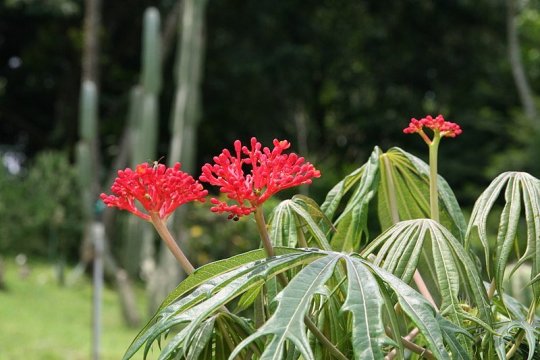
View On WordPress
0 notes
Link
Apocynin, a low molecular oral treatment for neurodegenerative disease
Abstract
Accumulating evidence suggests that inflammatory mediators secreted by activated resident or infiltrated innate immune cells have a significant impact on the pathogenesis of neurodegenerative diseases. This may imply that patients affected by a neurodegenerative disease may benefit from treatment with selective inhibitors of innate immune activity. Here we review the therapeutic potential of apocynin, an essentially nontoxic phenolic compound isolated from the medicinal plant Jatropha multifida. Apocynin is a selective inhibitor of the phagocyte NADPH oxidase Nox2 that can be applied orally and is remarkably effective at low dose.
#Apocynin#integrative medicine#family medicine#herbal medicine#neurodegeneration#print this off later#immunology#Jatropha multifida#fav#acetovanillone
1 note
·
View note
Photo
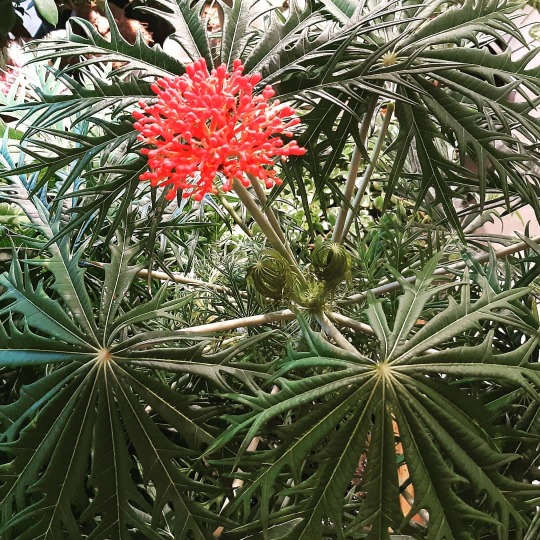
Jatropha multifida seen in flower shop. #plant #plants #houseplant #houseplants #jatropha #jatrophamultifida #paustian #paustianaarhus (her: Denmark) https://www.instagram.com/p/CRcSzrtMm7f/?utm_medium=tumblr
21 notes
·
View notes
Text
Safe Aviary Plants and Toxic Plants for Birds@|what plants can i put in an outdoor aviary@|@|24
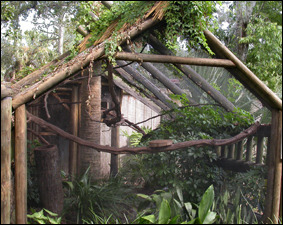
Plants not only add aesthetic value to an otherwise sterile-looking enclosure, but they also provide a more natural, engaging, and secure environment for the inhabitants to enjoy. Using plants to create visual barriers within the flight may help reduce aggression among cagemates by providing objects for the birds to hide behind.5 This in turn helps to make the birds feel more secure, and may therefore result in reduced stress levels. Foliage in the cage gives the birds something to occupy themselves with–birds often chew on, play within, and even build nests out of plants placed in their living space.
For this reason, care must be taken when selecting plants to decorate a flight. Both live and fake plants may be used, but all parts of the plant must be safe and nontoxic. The best fake plants to use are constructed of untreated silk and plastic. Make sure the silk plants do not have any components that may be easy for a bird to consume, tangle itself in, get caught on, or stuck by. Treated wood baskets and paper plants may be hazardous choices and are not recommended for decorating flights. Two benefits of using silk plants are: 1) they are not as easily destroyed by the birds, and 2) they can be scrubbed clean and disinfected as needed.
[external_link_head]
Live plants tend to demand more upkeep and may need to be replaced more frequently, as finches often love to pick them apart. Try to obtain plants that have not been sprayed with any pesticides or chemicals, and be sure to rinse the plants off before placing them in and around the flight. Do not add any fertilizers to the soil (they are toxic);6 if fertilizers are already present in the soil, repot the plant with uncontaminated soil. Leaving each plant in its pot is suggested, in case a plant dies and needs to be removed.
Helpful Hints41
Placement
Plantings should be spaced appropriately to allow room for flight paths and to permit the birds to access to the floor of the enclosure. Walk-in enclosures should also have planned pathways for birdkeeper access. Be careful to provide climbing vines with trellis to support the weight of their growth; otherwise they could break the aviary mesh and allow escape of the birds.
Selection
Aside from ensuring that the plant(s) you have selected are non-toxic, try to avoid purchasing plants which are tall and rapidly-growing as these will require constant pruning. In addition to considering what plants are best suited for your area, don’t forget to also consider the needs of the birds. Avadavats and Munias enjoy climbing small bamboos and grasses, for example, Munias and Mannikins prefer to weave their nests into grass clumps, and Weavers need palm leaves and broad-leafed grasses for nesting material.
Timing of Live Plantings
Plants should be added to the enclosure as it is being completed. The plants should be allowed to grow sufficiently before adding the birds; this way, the plants will be better able to withstand being nibbled on. Ideally plants should produce their densest foliage while the birds are nesting.
Safe Aviary Plants25,17
When choosing plants for your aviary, consult a botanist or experienced gardener who can help you select plants which are suitable for planting in your locale (considering your hardiness zone, soil type, sun exposure, etc.). Below are some options which have been listed as safe for birds.
Note: Please be aware that roses and bougainvillea have thorns.
Outdoor Plants
Trees & Shrubs
Acacia
Almond
Arbutus
Ash

Aspen
Autumn olive
Bayberry
Birch
Bladdernut
Blueberry
Camellia
Cottonwood
Dogwood
Elm
Fir (balsam, douglas, subalpine, white)
Forsythia
Fuchsia
Guava
Hawthorn
Larch
Madrona
Magnolia
Mango (zone 9+)
Manzanita
Mountain ash
Nectarine
Papaya (zone 10+)
Pear (as long as the seeds aren’t eaten)
Pine (ponderosa, spruce, Virginia, white)
Pittosporum (zone 9+)
Poplar
Pyracantha
Raspberry
Rose
Rubus odoratus
Spruce (black, Norway, red, white)
Viburnum
White poplar
Vines
Bougainvillea (can also be grown as shrub or small tree)
Grape vine
Russian Vine (Polygonum baldschuanicum)
[external_link offset=1]
Grasses & Herbs
Bamboo
Oregano
Rosemary
Thyme
Ground Cover and Short Plants
Baby’s tears aka Polka Dot Plant (Helxine soleirolii)
Chickweed
Creeping jenny (Lysimachia)
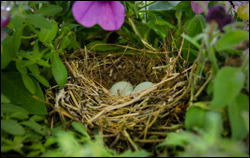
Wild passerines built a nest in a hanging petunia.
Dandelion
Marigold
Mother of pearl
Nasturtium (zone 9+)
Petunia
Piggyback begonia (Begonia hispida variant Cucullifera)
Piggyback plant
Plectranthus (zone 9+)
Sedum
Thistle
White clover
Indoor Plants (Safe Houseplants) and Tropical Plants
African violet (Saintpaulia spp., Episcia reptans)
Aluminum plant (Pilea cadierei)
Bird’s Nest Fern (Asplenium nidus)
Boston Fern (Nephrolepis exaltata)
Bloodleaf
Bromeliads
Burro’s tail
Cactus (except pencil, peyote, mescaline, candelabra)
Christmas cactus (Schlumbergera bridgesii)
Cissus: Danish ivy aka Grape Ivy (Cissus rhombifolia), Kangaroo vine (Cissus antarctica)
Emerald ripple peperomia
Flame nettle (Coleus sp.)
Gold-fish plant
Hens & chickens
Lipstick plant
Madagascar jasmine
Monkey plant
Nerve plant
Palms:

Potted palms provide privacy around the nest.
Areca (Chrysalidocarpus lutescens)
Bamboo (Chamaedorea erumpens)
Butterfly Cane
Canary Island (Phoenix canariensis)
Date
European Fan (Chamaerops humilis)
Fishtail
Golden Feather
Paradise/Kentia (Howea foresterana)
Parlor (Chamaedorea elegans)
Lady (Raphis excelsa)
Madagascar
Miniature Fan
Phoenix
Pygmy Date
Robelein Lady
Sentry
Wine
Peacock plant (Calathea)
Pepperomia (Pepperomia sp.)
Prayer plant (Maranta leuconeura)
Purple Passion aka Velvet Plant (Gynura aurantiaca)
Spider plant (Chlorophytum comosum)
Swedish ivy (Plectranthus verticillatus)
Wandering jew (Tradescantia sp.) including Giant white inch plant
Wax plant (Hoya carnosa)
Zebra plant (Aphelandra squarrosa)
Plants which Allow for Perching
Dwarf or Hawaiian Schefflera (Schefflera arboricola)
Umbrella tree/Schefflera (Brassaia actinophylla)
False aralia
Toxic Plants
Plant toxicosis in birds occurs if they chew on or ingest toxic plants. The toxic reaction can be due to pesticide residues on the plants, or to toxins within the plants themselves. Birds which chew on toxic plants may develop oral irritation; if they ingest enough, systemic clinical signs can occur such as vomiting or diarrhea. There is likely significant species differences in sensitivity,16 and studies are lacking. However, plants which have been reported as toxic in some birds, or which are considered to be potentially toxic include:6,25,52,29,56,16,17,28
Common Name Scientific Name Poisonous Part Symptoms Aconite Aconitum sp. all parts Agapanthus Agapanthus sp. sap Amaryllis Amaryllidaceae bulbs American yew Taxus canadensis needles, seeds Apple seeds Apricot pits Arrowhead vine Syngonium podophyllum leaves Arum Lily Arum sp. all parts Autumn crocus Colchicum autumnale all parts Avocado Persea americana pits, skin, flesh Reduced activity, inability to perch, fluffing feathers, labored breathing, rapid death, generalized tissue congestion. Azalea Rhododendron occidentale leaves Balsam pear Memordica charantia seeds, fruit rind Baneberry Actaia sp. berries, roots Bay tree Laurus nobilis Beans all types if uncooked Belladonna Atropa belladonna all parts Bird of paradise Caesalpina gilliesii seeds Bishop’s weed Ammi majus Bittersweet nightshade Solanum dulcamara immature fruit Black locust Robina pseudoacacia bark, sprouts, foliage Blue-green algae Schizophycaea sp. some forms toxic Hepatotoxic, lethal respiratory arrest. Boxwood Buxus sempervirens leaves, stems Buckthorn Rhamnus sp. fruit, bark Burdock Arctium minus Buttercup Ranunculus sp. sap, bulbs Caladium Caladium sp. leaves Calla lily Zantedeschia aethiopica leaves Severe irritation of mucous membranes, edema & irritation may take weeks to subside; severe dyspnea; severe keratoconjunctivitis if plant juices contact eyes. Vomiting, diarrhea. Camel bush Trichodesma incanum Candelabra cactus Euphorbia lactea sap Castor bean or Castor oil plant Ricinus communis beans, leaves Vomiting, diarrhea (possibly bloody), necrosis of organs (liver, spleen, lymph nodes, stomach, intestine) in mammals. Chalice vine Solandra sp. all parts Cherry bark, twigs, leaves, pits Cherry laurel Prunus laurocerasus clippings release cyanide fumes Chinese evergreen Aglaonema modestum all parts Christmas candle Pedilanthus tithymaloides sap Chrysanthemum Chrysanthemum sp. leaves, stems, flowers Clematis Clematis sp. all parts Coffee bean Sesbania sp seeds Gastroenteritis, can be fatal. Hyperthermia, hypertension, hyperactivity, seizures, tachycardia. Coral plant Jatropha multifida seeds Cowslip Caltha polustris all parts Croton Codiaeum sp. sap Crown of thorns Euphorbia milii sap Daffodil Narcissus sp. bulbs Daphne Daphne sp. berries Datura Datura sp. berries Deadly amanita Amanita muscaria all parts Death camas Zygadenis elegans all parts Delphinium Delphinium sp. all parts Diffenbachia or Dumb cane Dieffenbachia picta, sp. leaves Severe irritation of mucous membranes, edema & irritation may take weeks to subside; severe dyspnea; severe keratoconjunctivitis if plant juices contact eyes. Vomiting, diarrhea. Eggplant Solanaceae sp. all parts except fruit Elephant’s ear Colocasis sp. or Alocasia sp. leaves, stems Severe irritation of mucous membranes, edema & irritation may take weeks to subside; severe dyspnea; severe keratoconjunctivitis if plant juices contact eyes. Vomiting, diarrhea. English ivy Ilex aquafolium berries, leaves English yew Taxus baccata needles, seeds Ergot Claviceps purpurea present in poorly stored seed, silage, dog food Gangrene, hyperexcitability, seizures. Euonymus Euonymus sp. all parts False henbane Veratrum woodii all parts Flamingo flower Anthurium sp. leaves, stems Foxglove Digitalis purpurea leaves, seeds Digitalis glycoside – vomiting, bradycardia, arrhythmias, heart block Golden chain Laburnum anagyroides all parts Hemlock (poisoin and water) Conium sp. all parts Henbane Hyocyanamus niger seeds Holly Ilex sp. berries Horse chestnut Aesculus sp. nuts, twigs House plant ferns Pteris sp. Hyacinth Hyancinthinus orientalis bulbs Hydrangea Hydrangea sp. flower bud Iris Iris sp. bulbs Ivy Hedera sp. leaves, berries Jack-in-the-pulpit Arisaema triphyllum all parts Japanese yew Taxus cuspidata needles, seeds Java bean (lima bean) Phaseolus lunatus uncooked beans Jerusalem cherry Solanum pseudocapsicum berries Arrhythmias, bradycardia, heart block, severe gastroenteritis, calcification of vascular system, lungs, kidneys. May be teratogenic. Jimsonweed Datura sp. leaves, seeds Tachycardia, convulsions, death. Juniper Juniperus virginiana needles, stems, berries Lantana Lantana sp. immature berries Larkspur Delphinium sp. all parts Laurel Kalmia, Ledum, Rhodendron sp. all parts Lily Lilium sp. bulbs Lily of the valley Convallaria majalis all parts, including water housing the plant Vomiting, diarrhea, cardiac arrhythmias, bradycardia, heart block. Lobelia Lobelia sp. all parts Locoweed Astragalus mollissimus or Astragalus emoryanus all parts Hyperexcitability and locomotor difficulty. Lords and ladies Arum sp. all parts Lupin Lupinus sp. Marijuana Cannabis sativa leaves Maternity plant Klanchoe sp. Mayapple Podophyllum sp. all parts except fruit Mescal bean Sophora sp. seeds Milkweed Asclepias sp. Weakness, ataxia, seizures, cardiovascular signs. Mistletoe Santalales sp. berries Mock orange Poncirus sp. fruit Monkshood Aconitum sp. all parts Morning glory Ipomoea sp. all parts Narcissus Narcissus sp. bulbs Nightshades Solanum sp. berries, leaves Arrhythmias, bradycardia, heart block, severe gastroenteritis, calcification of vascular system, lungs, kidneys. May be teratogenic. Oak Quercus sp. Anorexia, diarrhea, small intestinal ulceration and hemorrhage, renal failure & polydypsia, hepatotoxic, can be fatal. Oleander, bay laurel Nerium oleander all parts Digitalis glycoside – vomiting, bradycardia, arrhythmias, heart block Parlor ivy Senecio sp. all parts Parsley Petroselinum sativum Peace lily Spathiphyllum sp. Regurgitation, oral pain, dysphagia and anorexia Peach pits Pencil tree Euphorbia tirucalli sap Philodendron Philodendron sp. leaves, stems Severe irritation of mucous membranes, edema & irritation may take weeks to subside; severe dyspnea; severe keratoconjunctivitis if plant juices contact eyes. Vomiting, diarrhea. Poinsettia Euphorbia pulcherrima leaves, flowers, stem, oily white sap Irritation, vesication, gastroenteritis, conjunctivitis. Poison ivy Toxicodendron radicans sap Poison oak Toxicodendron quercifolium sap Poison sumac Toxicodendron vernix sap Pokeweed Phytolacca americans leaves, roots, berries Ulcerative gastroenteritis; acute hemolytic crisis in people. Potato Solanum tuberosum skin, eyes, new shoots Arrhythmias, bradycardia, heart block, severe gastroenteritis, calcification of vascular system, lungs, kidneys. May be teratogenic. Pothos Epipremnum aureum all parts Regurgitation, oral pain, dysphagia and anorexia. Precatory bean Arbus precatoius Privet Ligustrum volgare all parts Ranunculus Ranunculus sp. sap Rhododendron Rhododendron sp. all parts Rhubarb Rheum rhaponticum leaves Rosary pea, prayer beans, Seminole beads Abrus precatorius seeds Vomiting, diarrhea (possibly bloody), necrosis of organs (liver, spleen, lymph nodes, stomach, intestine) in mammals. Sago Palm, Zamia Palm, Cycad Palm Cycad sp. Liver failure. Skunk cabbage Symplocarpus foetidus all parts Snowdrop Orinthogalum unbellatum all parts Snow on the mountain (ghostweed) Euphorbia marginata all parts Spindle tree Euonymus japonica all parts Split leaf philodendron or Swiss cheese plant Monstera sp. all parts Sweet pea Lathyrus latifolius seeds and fruit Tobacco Nicotinia sp. leaves Vomiting, diarrhea, hyperexcitability, muscle fasciculations, seizures, rapid death. Pododermatitis if bird handled by a smoker. Coughing, sneezing, sinusitis, conjunctivitis, secondary respiratory infections if exposed to cigarette smoke. Umbrella plant Cyperus alternifolius leaves Virginia Creeper Parthenocissus quinquefolio sap Western yew Taxus breviflora needles, seeds Wisteria Wisteria sp. all parts Xanthosoma Xanthosoma sp. leaves Yam bean Pachyrhizus erosis roots, immature pods Yellow jessamine Gelsemium sempervirens flowers Yew Taxus media wood, bark, leaves, seeds Vomiting, diarrhea, weakness, shock, coma, seizure, deaths from cardiac or respiratory failure.
Avian Plant Toxicology Research
Studies of plant toxicity in finch species are greatly lacking, however a few studies were done using canaries. Unfortunately, because great variation exists among species, it is not safe to assume that plants which are non-toxic to canaries are equally safe to other birds and vice versa.
[external_link offset=2]
AUTHOR(S): Arai, M.; Stauber, E.; Shropshire, C. M.
TITLE: Evaluation of selected plants for their toxic effects on canaries.
YEAR: 1992 CITATION: J Am Vet Med Assoc, 200(9), +61404532026
ABSTRACT: Leaves or fruit from 14 plants considered to be toxic to pet birds were administered by gavage to 15 pairs of canaries (Serinus canaria). Each bird was given 0.12 to 0.70 g of plant material. One pair served as a control and was given distilled water. The plant materials were flash-frozen in liquid nitrogen, pulverized, and resuspended in deionized water for administration. Of the plants tested, 5 (
oleander, lupine, foxglove, yew leaves, and dieffenbachia) were considered highly toxic and were associated with acute death of birds. The remaining plant samples (clematis, Hoya carnosa, privet Ligustrum vulgare, parsley Petrosilium sativum, cherry Prunus sp., Pyracantha coccinia, rhododendron, black locust Robinia pseudoacacia, and wisteria) caused no, or only transient, clinical illness.
AUTHOR(S): Hargis, A. M.; Stauber, E.; Casteel, S.; Eitner, D.
TITLE: Avocado (Persea americana) intoxication in caged birds.
YEAR: 1989 CITATION: J Am Vet Med Assoc, 194(1), 64-66
ABSTRACT: Following two incidents in which a pet canary and three pet cockatiels died under conditions suggesting ingestion of avocado as cause of death, an experimental study was undertaken. Avocados of two cultivars were mashed and administered via feeding cannula to 8 canaries and 8 budgerigars. Two control budgerigars were given water via feeding cannula. Six budgerigars and 1 canary died within 24 to 47 hours after the first administration of avocado.

Deaths were associated with administration of both avocado cultivars. Higher dose was associated with greater mortality. The 2 budgerigars given water were normal throughout the observation period. It is concluded that avocados are highly toxic to budgerigars and less toxic to canaries. PM findings observed in some birds included subcutaneous oedema in the pectoral area and hydropericardium.
The following study was done using just budgies:
AUTHOR(S): Shropshire, C. M.; Stauber, E.; Arai, A.
TITLE: Evaluation of selected plants for acute toxicosis in budgerigars.
YEAR: 1992 CITATION: J Am Vet Med Assoc, 200(7), 936-939
ABSTRACT: Pairs of budgerigars were given samples, by gavage, of plants considered potentially toxic to pet birds. Samples were prepared by flash-freezing and powdering fresh plant material in liquid nitrogen and resuspending the material in deionized water for administration. Of the 19 plants tested, only 6 induced clinical signs of illness; these plants included
yew, oleander, clematis, avocado, black locust, and Virginia creeper (Taxus media, Nerium oleander, Clematis sp, Persea americana, Robinia pseudoacacia, Parthenocissus quinquefolio).
The other plants tested in this study were: bleeding heart (Lamprocapnos spectabilis), privet (Ligustrum sp.), honeysuckle (Lonicera sp.), lupine (Lupinus sp.), cherry (Prunus sp.), pyracantha (Pyracantha coccinea), boxwood (Buxus sp.), dumbcane (Dieffenbachia seguine), foxglove (Digitalis sp.), spindle bush (Euonymus alatus), poinsettia (Euphorbia pulcherima), rhododendron (Rhododendron sp.), and blue elderberry (Sambucus cerulea).
Note how some plants which appear well tolerated by budgies (lupine, dieffenbachia, foxglove) prove fatal to canaries, while some plants which canaries appear to tolerate (clematis, black locust) make budgies quite ill. Until more research is done, it is important to err on the side of caution and avoid any plant which may potentially be toxic. [external_footer]
source https://livingcorner.com.au/safe-aviary-plants-and-toxic-plants-for-birdswhat-plants-can-i-put-in-an-outdoor-aviary24/
2 notes
·
View notes
Photo
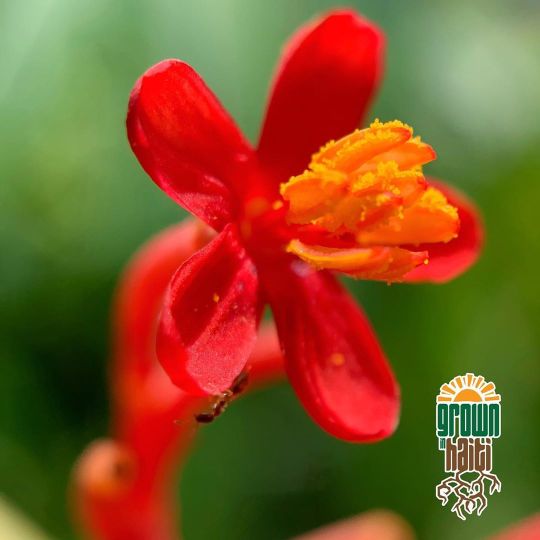
Beautiful flowers from the Jatropha multifida, commonly known as coral plant or physic nut. I grew up with with so many of these around. Funny enough, this plant came from the property that’s I grew up on which makes them extra special. Apart from experiencing nostalgia, pharmacological studies have shown that the leaves, the latex and the fruits of this plant are used externally in the treatment of infected wounds, skin infection and as a cicatrizing, ulcers, oral thrush, constipation and fever. In Indonesia one of its local names is 'yodium' ('iodine'), which reflects the popular use as a wound-healing remedy. In Indo-China, dried roots are given as a decoction against indigestion and colic; they are also prescribed as a tonic to treat orchitis and oedemas. The leaves (which contain saponins, are used as a purgative, and in the treatment of dysentery and scabies ・・・ #growninhaiti #coralplan #physicnut #Jatrophamultifida #nostalgia #reforestation #memories #agroforestry #childhood #medicinal #diversity #variety #haiti #ayiti #plantedfromseed #flower #flowerpower https://www.instagram.com/p/CAjiSwQlNvc/?igshid=1sv3zm4kry35m
#growninhaiti#coralplan#physicnut#jatrophamultifida#nostalgia#reforestation#memories#agroforestry#childhood#medicinal#diversity#variety#haiti#ayiti#plantedfromseed#flower#flowerpower
2 notes
·
View notes
Text
Làm đẹp da bằng các phương thuốc y học cổ truyền
Hiện nay, theo xu hướng hiện đại, ngoài việc khám và điều trị bệnh bằng Y học cổ truyền, các kỹ thuật chăm sóc - điều trị bệnh lý về da bằng các bài thuốc cổ phương, các thảo dược thiên nhiên, phương pháp xoa bóp - day ấn huyệt... phối hợp với kỹ thuật thẩm mỹ hiện đại.
Làm đẹp bằng các phương thuốc y học cổ truyền
- Tác dụng kháng khuẩn, chống viêm: kim ngân hoa, liên kiều, bồ công anh, ké đầu ngựa, sài đất, thổ phục linh…
- Giải dị ứng: tía tô, phù bình, hoàng liên, kinh giới…
- Nhuận gan mật, nhuận trường: nhân trần, chi tử, muồng trâu, Actiso, diệp hạ châu…
- Hành khí hoạt huyết giúp giảm đau, tiêu sưng: đan sâm, xuyên khung, hồng hoa…
- Giai đoạn các sang thương bệnh lý hồi phục dần, thể trạng khí huyết âm dương còn suy yếu, cần thiết phải bổ khí huyết nâng đỡ thể trạng, hỗ trợ giúp mau lành các tổn thương da, phòng ngừa tái phát: nhân sâm, đương quy, linh chi, huỳnh kỳ, thục địa, hoài sơn…
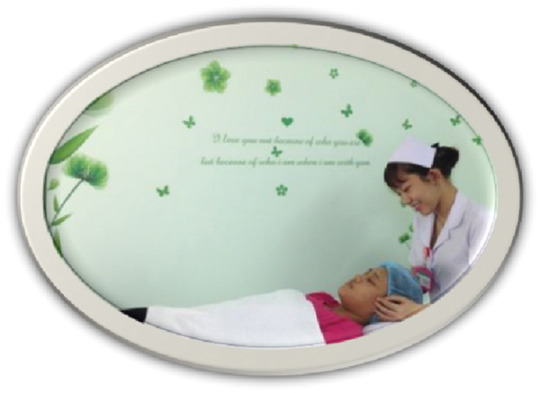
Chăm sóc da bằng phương pháp xoa bóp - day ấn huyệt vùng mặt
Xoa bóp - day ấn huyệt Đông y không chỉ có tác dụng trong điều trị một số bệnh mà còn có công dụng trong chăm sóc da.Nếu bị mỏi mệt, liệu trình xoa bóp day ấn huyệt vùng mặt bằng tinh dầu sẽ là giải pháp giúp giải tỏa căng thẳng rất hiệu quả.
Các động tác xoa bóp day ấn huyệt sẽ nhẹ nhàng tác động lên từng vùng trên cơ thể làm tăng cường lưu thông khí huyết, cho toàn thân trở nên nhẹ nhõm.
Bên cạnh đó, những động tác kỹ thuật đúng cách sẽ nhanh chóng đánh tan mỡ thừa và độc tố, giúp làn da trở nên sáng mịn và khuôn mặt săn chắc hơn.
Đắp mặt nạ dưỡng da - chăm sóc da với thảo dược thiên nhiên:
Bằng sản phẩm được bào chế theo công thức riêng, đặc biệt an toàn cho da, được sử dụng cao thảo dược trong bước đắp mặt nạ trắng sáng. Những sản phẩm tinh chế từ thảo dược thiên nhiên luôn mang đến mùi hương thơm mát dễ chịu, hoàn toàn mát dịu cho làn da, khả năng làm trắng da an toàn, hiệu quả.
Một số thảo dược thường được sử dụng
- Bạch Linh (Poria Cocos): Làm trắng da, mờ vết nám, sạm.
- Bạch chỉ (Angelica dahurica B. F.): Tán phong trừ thấp, thông khiếu, giảm đau, tiêu thũng trừ mủ. Chữa mụn nhọt sưng đau, mưng mủ.
- Bạch cập (Bletilla striata R.): Bổ Phế, sinh cơ, hoá ứ, cầm máu. Chữa mụn nhọt sưng tấy, lở ngứa, bỏng lửa, giúp vết thương nhanh lành, giảm tàn nhang, tiêu trừ nám, sạm.
- Bạch liễm (Ampelopsis japonica): Tả hỏa, tán kết, sinh cơ, chỉ thống. Chữa mụn nhọt, sưng viêm ngoài da.
- Bạch phụ tử (Jatropha multifida L.): Tán ứ, tiêu thũng, chỉ huyết. Chữa vết thương nhiễm khuẩn, lở loét vì có khả năng ức chế vi khuẩn và kháng viêm, tăng sinh mô hạt, chống oxy hoá.
- Thiên hoa phấn (Trichosanthes kirilowii M.): Sinh tân nhuận táo. Chữa da nóng, khô, lở ngứa, tróc vảy, làm mất nếp nhăn, tăng độ đàn hồi của da.

Một số ứng dụng của các loại cao thảo dược
- Làm lành vết thương, ngăn ngừa sẹo: Một số cao thảo dược chứa các thành phần kháng khuẩn, kháng viêm và chống nhiễm trùng tự nhiên, có công dụng vệ sinh vết thương, làm giảm đau và mủ, thúc đẩy các vết thương lành nhanh chóng. Đồng thời, các dưỡng chất và vitamin trong cao thảo dược giúp tái tạo làn da, không để lại sẹo.
- Dưỡng ẩm da và làm sáng da: Một số cao thảo dược giúp nuôi dưỡng da, duy trì độ ẩm cho da, tránh da bị khô nhờ vào hàm lượng axit dồi dào có trong mật ong, đồng thời chứa các thành phần tẩy trắng tự nhiên, giúp da trắng sáng hơn, đồng thời duy trì lượng collagen dưới da, tăng độ đàn hồi cho da, làm da săn chắc hơn.
- Tẩy tế bào chết, lấy đi bụi bẩn trên da, ngăn ngừa lão hóa da: Đắp mặt nạ cao thảo dược có tác dụng lấy đi các chất bẩn nằm sâu trong lỗ chân lông, làm cho da sạch sẽ, bảo vệ da khỏi các tác nhân gây mụn. Bên cạnh đó, các thành phần chứa axit alpha hydroxy, axit malic… trong các cao thảo dược giúp tẩy da chết cho da rất hiệu quả.Kết hợp với các chất chống oxy hóa và vitamin E làm giảm quá trình lão hóa da, giúp da sáng, tráng, mịn màng và căng tràn sức sống.
- Điều trị và ngăn ngừa mụn lây lan: Nhờ đặc tính kháng khuẩn và chống viêm kết hợp với Vitamin nhóm B có tác dụng chống oxy hóa, giúp giải độc gan và loại bỏ tạp chất trên da, ngăn ngừa sự phát triển các vi khuẩn gây mụn, giúp lưu thông máu, làm liền sẹo.
Vì vậy, sử dụng mặt nạ cao thảo dược trong điều trị mụn mang lại hiệu quả cao và tốt cho sức khỏe của bệnh nhân.
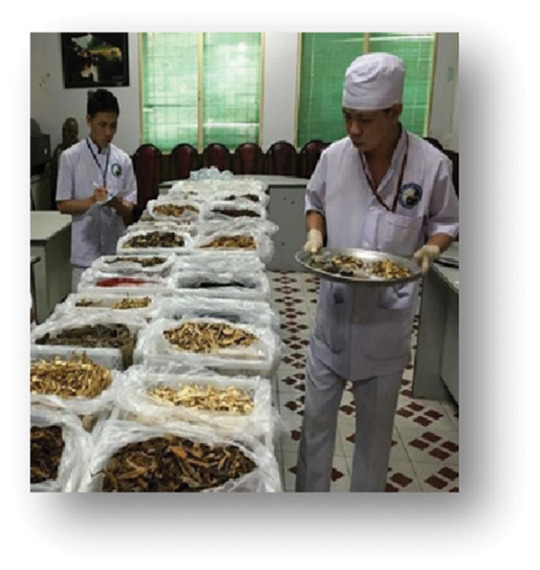
Xông hơi mặt bằng tinh dầu để chăm sóc làn da
- Môi trường công sở hiện đại với máy lạnh, điều hòa, khói bụi hoặc thậm chí căng thẳng, stress do công việc cũng có thể khiến làn da bị tổn hại. Để giúp cải thiện tình trạng này có thể áp dụng phương pháp xông hơi mặt bằng các loại tinh dầu thiên nhiênvới tần suất - 2 lần/tuần.
- Xông mặt với tinh dầu là phương pháp làm sạch sâu cho da và chăm sóc da vô cùng hiệu quả. Dưới tác động nhiệt làm cho các mao mạch hoạt động mạnh hơn, các lỗ chân lông trên da mặt tự động mở ra, đồng thời tế bào già cỗi sẽ bong nhanh hơn. Hơi nước có tác dụng giúp lấy đi những bụi bẩn, độc tố ẩn chứa dưới da ra bên ngoài, rất tốt cho những người phải thường xuyên ngồi trước máy tính, trong văn phòng máy lạnh suốt 8 tiếng.
- Ngoài việc làm đẹp, giữ làn da sạch, xông hơi còn giúp giải cảm, giải độc tố trong cơ thể, điều hòa kinh mạch, lưu thông khí huyết. Hơi nóng từ xông hơi sẽ kích thích các tuyến bã nhờn hoạt động, lỗ chân lông mở rộng dưới tác động của nhiệt sẽ thúc đẩy sự đào thải các độc tố.Xông hơi còn sưởi ấm cơ thể, thư giãn tinh thần.
- Xông hơi cũng làm giãn các mạch máu dưới da, giúp mạch máu lưu thông, máu đến nuôi da nhiều hơn. Xông hơi kết hợp với xoa bóp day ấn huyệt và dùng các loại tinh dầu chăm sóc da sẽ giúp da hấp thụ dễ dàng các dưỡng chất.Xông hơi cùng các loại tinh dầu bưởi, quế, gừng..., giúp cơ thể phân hủy một lượng mỡ nhất định để điều nhiệt.
- Tinh dầu sẽ theo hơi nước thẩm thấu sâu đến tận từng tế bào biểu bì của da mặt. Ngoài tính năng diệt khuẩn, tinh dầu còn có nhiều tác dụng giúp tế bào da được khỏe mạnh, tăng tính đàn hổi và chống lão hóa.
Ngoài ra bạn có thể tham khảo thêm thông tin về bộ mỹ phẩm trị mụn Vernicers Acne tại: http://vernicersacne.com/
0 notes
Text
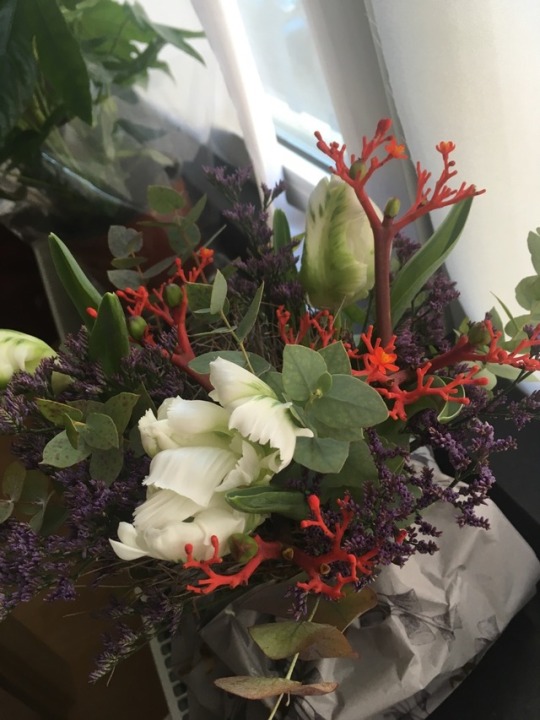
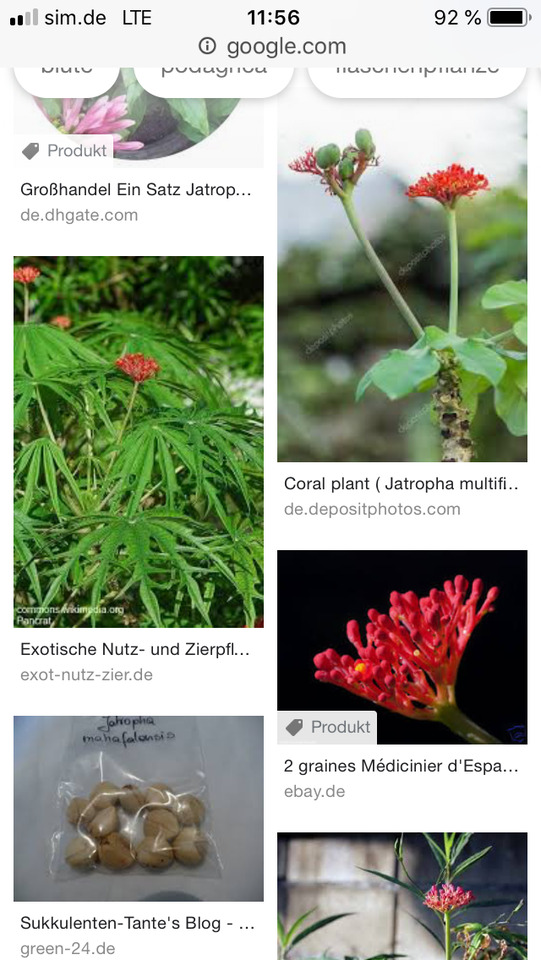
He gave me these bouquet for valentines day and said that the shopkeeper hadnt recommended to put this red coral flower in there. that it would be a „really crazy look“. but he chose them anyway, because he liked it and when I saw it I immediately fell in love with exactly these, which had the most beautiful radiant red color and little flowers blooming at the end of each branch. havent seen it before. it had some kind of berries in it, so i wanted to know, whether i could take them and grow my own plant. to my surprise, google showed me a kinda succulent tropical plant, thats called jatropha multifida (what a gorgeous name!!!) - big, decorative green leaves, similar to my new aralia fatsia japonica and thats when i finally fell in love. i need to add this plant to my „urban jungle“ project!!! i need it!!!!!!!!! but how can i use the unripe berries from these flowers... actually... why did they cut off the flowers. all those valuable berries 😭😰

0 notes
Text
A traditional medicine from Myanmar could hold the key to newer and better influenza treatments
(Natural News) In past studies, the coralbush (Jatropha multifida), a medicinal plant from Myanmar (Burma), has been reported to contain antimicrobial, antimalarial, and anti-tumor activities. However, its anti-use to fight influenza had not yet been proven. Therefore, researchers at the Tokushima Bunri University, University of Toyama, and the University of Yangon evaluated the anti-influenza activity of...
from NaturalNews.com https://ift.tt/2Of4r8e
via IFTTT
0 notes
Text
Why Apocynin Regenerates Skin
The fabled "fountain of youth" wasn't just an intriguing physical location sought after by ancient explorers, but a concept that has captured the imaginations of ordinary mortals since the dawn of time. Some have pursued every avenue they could think of to help them live longer.
But like so many things in life, scientists found that a little healthy competition is all that's needed — cell competition, that is. Scientists in Japan recently discovered a protein called COL17A1 that encourages cell competition by driving out weak cells and revitalizing stronger cells toward replication and, in the process, maintaining tissue fitness.
Aging and other stressors, such as excess ultraviolet radiation and damaging free radicals, take a toll on your skin, and so does steadily depleting COL17A1, as it replicates weaker cells, not stronger ones. The inevitable results: skin that is thinner, more prone to damage and takes longer to heal.
The research involved the use of mice tails because of their similarity to human skin.1 Emi Nishimura, a professor at the Tokyo Medical and Dental University's stem cell biology department and leader of the featured study, noted that "Damaged or stressed stem cells can be selectively eliminated by intact stem cells every day in our skin."
How COL17A1 'Rescues' Aging Skin
When the researchers learned how important COL17A1 is in maintaining skin resilience, they set about investigating the possibility of stimulating it once it was depleted. They looked for compounds with the ability to "kick-start" the antiaging process and identified two chemical compounds: Both Y27632 and apocynin proved to produce positive results on skin cells, pointing to ways of "facilitating skin regeneration and reducing skin aging."
The two compounds "significantly promoted" repair and regeneration even to deep-tissue skin wounds, and it was done two ways, according to the study, published in the journal Nature.2 As the study authors observed:
"Stem cells with higher potential or quality are thus selected for homeostasis, but their eventual loss of COL17A1 limits their competition, thereby causing ageing. The resultant hemidesmosome fragility and stem cell delamination deplete adjacent melanocytes and fibroblasts to promote skin ageing.
Conversely, the forced maintenance of COL17A1 rescues skin organ ageing, thereby indicating potential angles for anti-ageing therapeutic intervention."3
How Y27632 and Apocynin 'Kick-Start' Antiaging
When two professors from the University of Colorado reviewed the Tokyo study, they reported that fruit flies had been the only subjects ever closely scrutinized in regard to cell competition.
Ganna Bilousova and James DeGregori wrote that the research conducted by Nishimura and her colleagues could be considered "proof of principle" in regard to the ability of Y27632 and apocynin to fight aging. They also noted that the research "Provides evidence that healthy cells in mammals can also efficiently repopulate adult tissues, replacing unfit or damaged cells."4
While conceding that more studies would be required to nail down the mechanisms responsible for cell competition in other tissues, Nishimura told news agency AFP5 they also hoped to identify compounds capable of performing the same antiaging functions in other organs.
She added, "We are working on other epithelial organs as well to find out (whether) similar competition may underlie long-term tissue maintenance as well as organ ageing."6
She also noted the study team's hope that the research would lead to the development of tablets, creams and other products that could halt the deterioration of and promote the repair of skin cells, and that they could "collaborate with pharmaceutical or cosmetic companies for the clinical use of the chemicals."7 According to a Mediators of Inflammation study published in 2008:
"Apocynin is a naturally occurring methoxy-substituted catechol, experimentally used as an inhibitor of NADPH-oxidase. It can decrease the production of superoxide from activated neutrophils and macrophages while the ability of phagocytosis remains unaffected."8
In explanation, neutrophils are the most common type of white blood cells that help your body respond to infection and heal damaged tissue.9 Macrophages "act as antimicrobial warriors" that "play critical roles in immune regulation and wound healing."10 Phagocytosis is described as a complex process for the ingestion and elimination of pathogens, and fundamental for tissue homeostasis.11
Apocynin: What It Is and What It Does
Perhaps a simpler way of characterizing apocynin is to explore where it's found. The 2008 inflammation study12 notes that it was first described in an investigation conducted in 1883 when the compound was isolated from the roots of Canadian hemp (Apocynum cannabinum) and used to treat dropsy and heart problems.
It was also found in the root of Picrorhiza kurroa, a plant with the faint odor of vanilla, native to India, Nepal, Tibet and Pakistan and common in Ayurvedic treatments. In India and Sri Lanka, extracts were used "for the treatment of ailments of liver, heart, joints, and lungs."13
A 2014 study14 shows that the "small phenolic antioxidant" known as apocynin and extracted from the Jatropha multifida plant, also known as Guatemala rhubarb or coral plant, grown from Mexico to Central America to Brazil, was shown to have potential for treating neurodegenerative diseases.
Researchers also found apocynin to be one of five volatile vanilla flavor compounds in the vanilla bean, aka Vanilla planifolia.15 Another study suggested its cancer-fighting potential:
"The spread of cancer cells to distant organs, in a process called metastasis, is the main factor that contributes to most death in cancer patients. Vanillin, the vanilla flavoring agent, has been shown to suppress metastasis in a mouse model … (and) their structurally related compounds, apocynin and diapocynin, in hepatocellular carcinoma cells."16
Besides its advantageous effects on fighting inflammation and free radical scavenging, apocynin has a history of successful treatment of a long list of ailments, including:
Ischemia-reperfusion, characterized by damaged lung tissue due to a lack of oxygen and subsequent returned supply,17 with apocynin also showing potential in treating several other respiratory diseases
Possible neuroprotective abilities, particularly in brain injury following an eschemic stroke,18 as well as reduced cerebral and vascular injury in experimental stroke models19
Potential in the treatment of atherosclerosis due to reduced blood pressure,20 and preventing endothelial dysfunction21
Chronic inflammatory joint diseases such as osteoarthritis and rheumatoid arthritis22
Inhibiting tumor migration in breast cancer cells23
A 2014 study notes that "the perspectives for apocynin in chronic neurodegenerative disorders," suggests a "potentially beneficial role" in amyotrophic lateral sclerosis (ALS) or Lou Gehrig's disease,24 Alzheimer's25 and Parkinson's disease.26 Although mouse models were the usual subjects in experimentation, the researchers are hopeful that apocynin will prove just as effective in human patients.
Other Beneficial Functions of Apocynin
Arguably the most important aspect of apocynin is its role in fighting inflammation, and the above study notes that it's been demonstrated in a variety of cell and animal models. Apocynin also "inhibits the assembly of NADPH-oxidase that is responsible for reactive oxygen species (ROS) production."27
The 2008 study explains NADPH-oxidase as the enzyme responsible for ROS production, so suppressing it is often the goal in disease prevention therapies. When antioxidants are in place or introduced, oxidative stress is diminished. Your body produces an "armory of antioxidants to defend itself," which nonetheless are sometimes insufficient to effectively defend against ROS.
ROS damages your cells as well as your DNA, which is part of the reason your body begins showing signs of aging. To a large degree, how well your mitochondria work is determined by your diet, optimally a ketogenic diet (in which you replace carbs with moderate amounts of high-quality protein and high amounts of beneficial fat).
However, the featured study notes that it's the excessive production of ROS that becomes damaging, and that's how it's been implicated in the progression of many diseases. It's also why apocynin is noted as a potential treatment for many of them.
A Mediators of Inflammation review concluded that apocynin, besides its lack of known side effects, deserves further attention in the development of "safe and selective anti-inflammatory drugs which lack the often serious side effects of steroids."28
from
http://articles.mercola.com/sites/articles/archive/2019/04/15/why-apocynin-regenerates-skin.aspx
source http://niapurenaturecom.weebly.com/blog/why-apocynin-regenerates-skin
0 notes
Text
Why Apocynin Regenerates Skin
The fabled “fountain of youth” wasn’t just an intriguing physical location sought after by ancient explorers, but a concept that has captured the imaginations of ordinary mortals since the dawn of time. Some have pursued every avenue they could think of to help them live longer.
But like so many things in life, scientists found that a little healthy competition is all that’s needed — cell competition, that is. Scientists in Japan recently discovered a protein called COL17A1 that encourages cell competition by driving out weak cells and revitalizing stronger cells toward replication and, in the process, maintaining tissue fitness.
Aging and other stressors, such as excess ultraviolet radiation and damaging free radicals, take a toll on your skin, and so does steadily depleting COL17A1, as it replicates weaker cells, not stronger ones. The inevitable results: skin that is thinner, more prone to damage and takes longer to heal.
The research involved the use of mice tails because of their similarity to human skin.1 Emi Nishimura, a professor at the Tokyo Medical and Dental University’s stem cell biology department and leader of the featured study, noted that “Damaged or stressed stem cells can be selectively eliminated by intact stem cells every day in our skin.”
How COL17A1 ‘Rescues’ Aging Skin
When the researchers learned how important COL17A1 is in maintaining skin resilience, they set about investigating the possibility of stimulating it once it was depleted. They looked for compounds with the ability to “kick-start” the antiaging process and identified two chemical compounds: Both Y27632 and apocynin proved to produce positive results on skin cells, pointing to ways of “facilitating skin regeneration and reducing skin aging."
The two compounds "significantly promoted” repair and regeneration even to deep-tissue skin wounds, and it was done two ways, according to the study, published in the journal Nature.2 As the study authors observed:
“Stem cells with higher potential or quality are thus selected for homeostasis, but their eventual loss of COL17A1 limits their competition, thereby causing ageing. The resultant hemidesmosome fragility and stem cell delamination deplete adjacent melanocytes and fibroblasts to promote skin ageing.
Conversely, the forced maintenance of COL17A1 rescues skin organ ageing, thereby indicating potential angles for anti-ageing therapeutic intervention.”3
How Y27632 and Apocynin 'Kick-Start’ Antiaging
When two professors from the University of Colorado reviewed the Tokyo study, they reported that fruit flies had been the only subjects ever closely scrutinized in regard to cell competition.
Ganna Bilousova and James DeGregori wrote that the research conducted by Nishimura and her colleagues could be considered “proof of principle” in regard to the ability of Y27632 and apocynin to fight aging. They also noted that the research “Provides evidence that healthy cells in mammals can also efficiently repopulate adult tissues, replacing unfit or damaged cells.”4
While conceding that more studies would be required to nail down the mechanisms responsible for cell competition in other tissues, Nishimura told news agency AFP5 they also hoped to identify compounds capable of performing the same antiaging functions in other organs.
She added, “We are working on other epithelial organs as well to find out (whether) similar competition may underlie long-term tissue maintenance as well as organ ageing.”6
She also noted the study team’s hope that the research would lead to the development of tablets, creams and other products that could halt the deterioration of and promote the repair of skin cells, and that they could “collaborate with pharmaceutical or cosmetic companies for the clinical use of the chemicals.”7 According to a Mediators of Inflammation study published in 2008:
“Apocynin is a naturally occurring methoxy-substituted catechol, experimentally used as an inhibitor of NADPH-oxidase. It can decrease the production of superoxide from activated neutrophils and macrophages while the ability of phagocytosis remains unaffected.”8
In explanation, neutrophils are the most common type of white blood cells that help your body respond to infection and heal damaged tissue.9 Macrophages “act as antimicrobial warriors” that “play critical roles in immune regulation and wound healing.”10 Phagocytosis is described as a complex process for the ingestion and elimination of pathogens, and fundamental for tissue homeostasis.11
Apocynin: What It Is and What It Does
Perhaps a simpler way of characterizing apocynin is to explore where it’s found. The 2008 inflammation study12 notes that it was first described in an investigation conducted in 1883 when the compound was isolated from the roots of Canadian hemp (Apocynum cannabinum) and used to treat dropsy and heart problems.
It was also found in the root of Picrorhiza kurroa, a plant with the faint odor of vanilla, native to India, Nepal, Tibet and Pakistan and common in Ayurvedic treatments. In India and Sri Lanka, extracts were used “for the treatment of ailments of liver, heart, joints, and lungs.”13
A 2014 study14 shows that the “small phenolic antioxidant” known as apocynin and extracted from the Jatropha multifida plant, also known as Guatemala rhubarb or coral plant, grown from Mexico to Central America to Brazil, was shown to have potential for treating neurodegenerative diseases.
Researchers also found apocynin to be one of five volatile vanilla flavor compounds in the vanilla bean, aka Vanilla planifolia.15 Another study suggested its cancer-fighting potential:
“The spread of cancer cells to distant organs, in a process called metastasis, is the main factor that contributes to most death in cancer patients. Vanillin, the vanilla flavoring agent, has been shown to suppress metastasis in a mouse model … (and) their structurally related compounds, apocynin and diapocynin, in hepatocellular carcinoma cells.”16
Besides its advantageous effects on fighting inflammation and free radical scavenging, apocynin has a history of successful treatment of a long list of ailments, including:
Ischemia-reperfusion, characterized by damaged lung tissue due to a lack of oxygen and subsequent returned supply,17 with apocynin also showing potential in treating several other respiratory diseases
Possible neuroprotective abilities, particularly in brain injury following an eschemic stroke,18 as well as reduced cerebral and vascular injury in experimental stroke models19
Potential in the treatment of atherosclerosis due to reduced blood pressure,20 and preventing endothelial dysfunction21
Chronic inflammatory joint diseases such as osteoarthritis and rheumatoid arthritis22
Inhibiting tumor migration in breast cancer cells23
A 2014 study notes that “the perspectives for apocynin in chronic neurodegenerative disorders,” suggests a “potentially beneficial role” in amyotrophic lateral sclerosis (ALS) or Lou Gehrig’s disease,24 Alzheimer’s25 and Parkinson’s disease.26 Although mouse models were the usual subjects in experimentation, the researchers are hopeful that apocynin will prove just as effective in human patients.
Other Beneficial Functions of Apocynin
Arguably the most important aspect of apocynin is its role in fighting inflammation, and the above study notes that it’s been demonstrated in a variety of cell and animal models. Apocynin also “inhibits the assembly of NADPH-oxidase that is responsible for reactive oxygen species (ROS) production.”27
The 2008 study explains NADPH-oxidase as the enzyme responsible for ROS production, so suppressing it is often the goal in disease prevention therapies. When antioxidants are in place or introduced, oxidative stress is diminished. Your body produces an “armory of antioxidants to defend itself,” which nonetheless are sometimes insufficient to effectively defend against ROS.
ROS damages your cells as well as your DNA, which is part of the reason your body begins showing signs of aging. To a large degree, how well your mitochondria work is determined by your diet, optimally a ketogenic diet (in which you replace carbs with moderate amounts of high-quality protein and high amounts of beneficial fat).
However, the featured study notes that it’s the excessive production of ROS that becomes damaging, and that’s how it’s been implicated in the progression of many diseases. It’s also why apocynin is noted as a potential treatment for many of them.
A Mediators of Inflammation review concluded that apocynin, besides its lack of known side effects, deserves further attention in the development of “safe and selective anti-inflammatory drugs which lack the often serious side effects of steroids.”28
from Articles http://articles.mercola.com/sites/articles/archive/2019/04/15/why-apocynin-regenerates-skin.aspx
source https://niapurenaturecom.tumblr.com/post/184196156341
0 notes
Photo
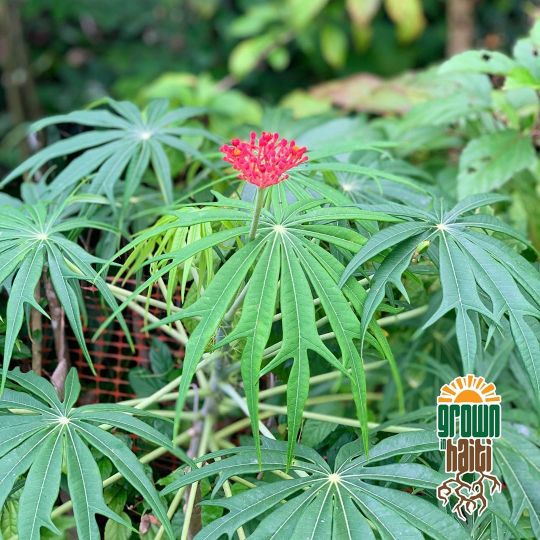
Jatropha Multifida, commonly known as coral plant and Physic nut. One of the plants I remember from my childhood. Butterflies love them from what I remember. The plant is harvested from the wild for local use as a medicine and source of oil. It was introduced as an ornamental into the Old World tropics long ago and is often grown as a hedge. Just a fair warning, ALL parts of the plant are poisonous 🤢. The ripe, dry seeds contain a dangerous, bitter, purgative oil which is sometimes used medicinally. Overdoses, it is reported, can be counteracted by drinking a glass of white wine. Limejuice and stimulants are the best antidotes in cases of poisoning by the seeds. This plant has also been used as a fish poison. ・・・ #growninhaiti #jatrophamultifada #coralplant #physicnut #evergreen #poisonous #ornamental #haiti #ayiti #agroforestry #medicinal #diversity #flora https://www.instagram.com/p/B6j-x-ollKo/?igshid=c7hd4zrugsbb
#growninhaiti#jatrophamultifada#coralplant#physicnut#evergreen#poisonous#ornamental#haiti#ayiti#agroforestry#medicinal#diversity#flora
1 note
·
View note
Text
A traditional medicine from Myanmar could hold the key to newer and better influenza treatments
(Natural News) In past studies, the coralbush (Jatropha multifida), a medicinal plant from Myanmar (Burma), has been reported to contain antimicrobial, antimalarial, and anti-tumor activities. However, its anti-use to fight influenza had not yet been proven. Therefore, researchers at the Tokushima Bunri University, University of Toyama, and the University of Yangon evaluated the anti-influenza activity of...
from NaturalNews.com https://ift.tt/2Of4r8e
from Betty Xiong https://ift.tt/2OgLnqd
0 notes
Photo

Vera Jatropha Multifida’s first modeling session was somewhat of a success. Practice makes perfect Vera!! Better luck next time… . . Also yes I’ve been naming the plants that I’ve been growing in planters. My portable garden that will follow me through my life has names so that I can keep track of their growth mostly. If you’ve got plant name suggestions and ideas I’d love to hear them! What do you name your plants? . . . #jatropha #jatrophamultifida #portablegarden #planters #pottedplants #pottedgarden #smalltree #prebonsai #bonsai #buddhabelly #coraltree #terrazzo #productphotography #backgrounderaser #photoshop #graphicdesign #gradientfeed #aesthetic #aestheticfeed #gardener #artist #gay #gayplantdad #plantdaddy #greenleaves #plantnames #vera #purple #purpleaesthetic #boyswithplants (at Miami, Florida) https://www.instagram.com/p/CXgd0g8riM4/?utm_medium=tumblr
#jatropha#jatrophamultifida#portablegarden#planters#pottedplants#pottedgarden#smalltree#prebonsai#bonsai#buddhabelly#coraltree#terrazzo#productphotography#backgrounderaser#photoshop#graphicdesign#gradientfeed#aesthetic#aestheticfeed#gardener#artist#gay#gayplantdad#plantdaddy#greenleaves#plantnames#vera#purple#purpleaesthetic#boyswithplants
0 notes
